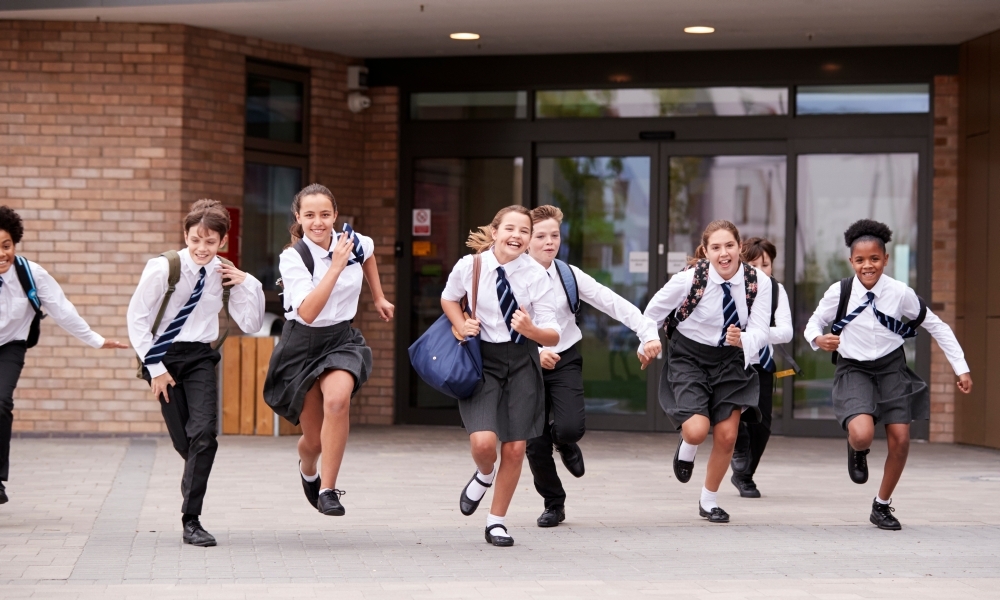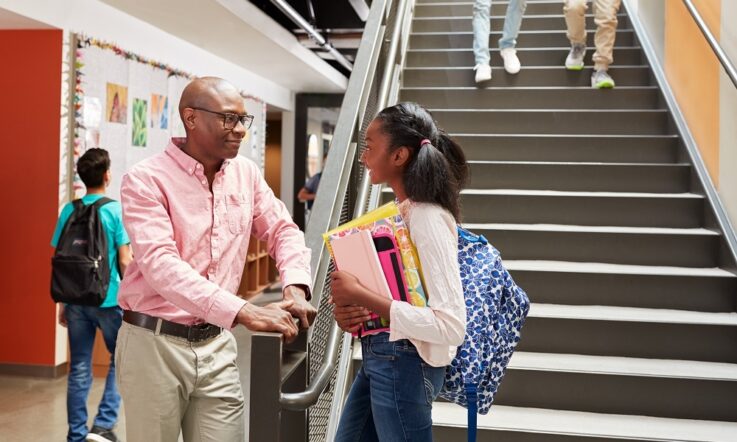A research review of different approaches over the last decade to improving student wellbeing has highlighted six key learnings to help drive decision-making in schools.
The Association of Independent Schools of NSW (AISNSW) commissioned the Telethon Kids Institute to carry out the review of wellbeing literature to identify the evidence-based approaches that best support whole-school wellbeing.
The review was carried out by the Institute’s Development and Education Program Head, Professor Donna Cross, and Senior Research Fellows Kevin Runions and Natasha Pearce and its findings have just been published. Launching the report, Cross said there was now an ‘extraordinary amount’ of research showing the importance of wellbeing in schools in improving student outcomes.
‘Our job has been to try and identify some of the key evidence that will drive decision-making in schools, and particularly around how wellbeing can be implemented effectively in the school environment.’
She added this evidence helps schools determine the unique approaches they need to take and the sorts of elements to include in practice, but effective implementation also requires educators to understand their own school context and the strengths and needs of students.
What did the researchers look at?
In order to consider how best to address the issue, Cross says establishing a clear definition about what wellbeing means was an important part of the review.
‘The most effective definition that we found suggests that wellbeing comprises of a positive sense of self-worth, a strong sense of belonging, and of course the ability to be able to practise skills that will enhance someone’s learning and development, and of course their health overall – and that all of that is happening in a safe and supportive school environment.’
Indeed, the report invites teachers and leaders to reflect on their own school’s definition of wellbeing and says consistently shared language is essential.
The research review sought to address two main questions: How effective are whole-school student wellbeing approaches in improving student wellbeing outcomes and academic performance? And, what are the implementable elements and/or characteristics of effective whole-school approaches to student wellbeing?
Cross and her colleagues conducted a search of meta-analysis and systematic reviews addressing whole-school approaches to support student wellbeing for the years 2006-20. They also carried out a systematic review of new studies published over a five year period from 2016 to ‘identify the cutting edge of school interventions’ in this area.
Six key learnings for schools
From the review of the wellbeing literature and interventions, the report makes six recommendations for school practice:
Adopt a whole-school approach
Taking a whole-school approach with multiple components and levels, targeting different groups within the school community, was shown to make the most difference. ‘Whole-school initiatives that are led by a team constituted of school leadership, teachers, parents/ carers, and students are most likely to succeed,’ the report says.
Focus on interventions with evidence of effectiveness
‘We know how exhausting it is to put a whole-school intervention in place, so we need to be conscious that we’re choosing programs and resources that have evidence that they’ll work with the students that we’re targeting,’ Cross says.
The report notes, given not all interventions will work, educators need training and support to help them select the approaches that are likely to have a positive impact in their context – that match their school’s strengths and needs.
‘Interventions that build problem-solving skills, personal insight, and opportunities for the practice of new skills and engaging multimedia activities to reinforce learnings appeared to be most effective. Interventions that explicitly teach social and emotional skills are recommended. Such skills are highly linked to overall student wellbeing. Social and emotional learning curriculum interventions that are Sequential, Active, Focused and Explicit (SAFE) have been shown to be more effective than those that are not.’
Establish a dedicated leadership team to drive implementation
Again, teachers and leaders are invited to think about their own context – deciding who will drive the wellbeing intervention is a key question. ‘Some studies have success with teacher-led implementations; others work better with a dedicated individual appointed to oversee it, often the case in whole-school interventions,’ the report says.
It adds finding the right person for the job is paramount. This means being able to establish a rapport with everyone involved – staff, students and families. ‘To the extent that if the face of the intervention is seen as “going through the motions”, insincere, or hard-done-by, the intervention is unlikely to succeed.
Schools also need to think about adapting interventions – making sure the lessons and resources are culturally and developmentally appropriate for those students being targeted. However, the report cautions against too much adaptation, to the extent it’s effectively a strategy that hasn’t been trialled. ‘A middle-ground can be achieved by ensuring that the teachers have a deep comprehension of the aims and strategies of the intervention and ensure that adaptations are not “sneaking in” their own priorities, but rather ensuring the evidence-based materials are accepted and best suited to engage the students.’
Prepare the school and staff early
The review found a lack of buy-in from educators was a fundamental challenge to the success of whole-school interventions. It says there’s a growing body of evidence about the importance of ‘getting ready’ for implementation.
If staff can appreciate the need for the intervention they’re more likely to get on-board. ‘Ideally, educators will feel a burning desire to do something new to support student wellbeing. This helps to ensure meaningful whole-school action at sufficient dosage,’ the review says.
It also warns against making ‘token efforts’ – it can be a challenge to make space in a crowded curriculum, but the intervention needs to be meaningfully, and to the right dosage. And, when it comes to professional learning support for staff, it recommends schools ‘train often and train well’. ‘Schools should aim to stoke a “burning desire” amongst educators to improve student social and emotional wellbeing.’
Provide meaningful engagement with families
Getting parents and teachers on the same page can lead to positive outcomes – interventions that involved families were found to be more effective in improving the school climate.
‘Families are essential partners in student wellbeing,’ the report says. ‘Engaging families early in planning and oversight of the whole-school intervention is recommended.’
Again, if you’re involving parents as ‘champions’ it can’t be tokenistic – they need to be empowered. The report also recommends choosing titles for your workshops and programs with a strong hook for parents/carers that catches their interest and speaks to their concerns.
Create meaningful opportunities for student voice and engagement
The report describes the importance of amplifying student voice: ‘If an intervention is about students, it should not be done without students being involved in meaningful ways. … “Nothing About Us Without Us” is the motto.’
For example, in one successful intervention a ‘Speak-out Box’ was provided for students to raise any issues or ask for one-to-one support. The report says the students involved agreed that the success of the program was down to the quick response of teachers to the concerns they had posted in the box.
Pulling it all together
Releasing the report, AISNSW Chief Executive Dr Geoff Newcombe AM said the review highlighted how integral the school executive and wellbeing leadership teams are to effective wellbeing interventions and approaches.
Cross added that all the elements of a health-promoting school identified in the review are only effective when they’re coupled with good leadership to support implementation and staff who feel they have the capacity.
‘And when all of these are put together, we know that the investment in time is going to make a significant difference to children’s wellbeing, and of course also their learning.’
The full report How Can Schools Support Whole-school Wellbeing? A Review of the Research is available to download via the link (PDF, 3.6MB).
References
Runions, K.C., Pearce, N., & Cross, D. (2021). How Can Schools Support Whole-school Wellbeing? A Review of the Research. Report prepared for the Association of Independent Schools of New South Wales.
As a school leader, what informs your decision making when choosing and implementing an intervention? How do you ensure it meets the needs of your own students and context?
Thinking specifically about student wellbeing, look at the six recommendations from the review: Which of these areas, as school, are you good at? Which areas require more work?



